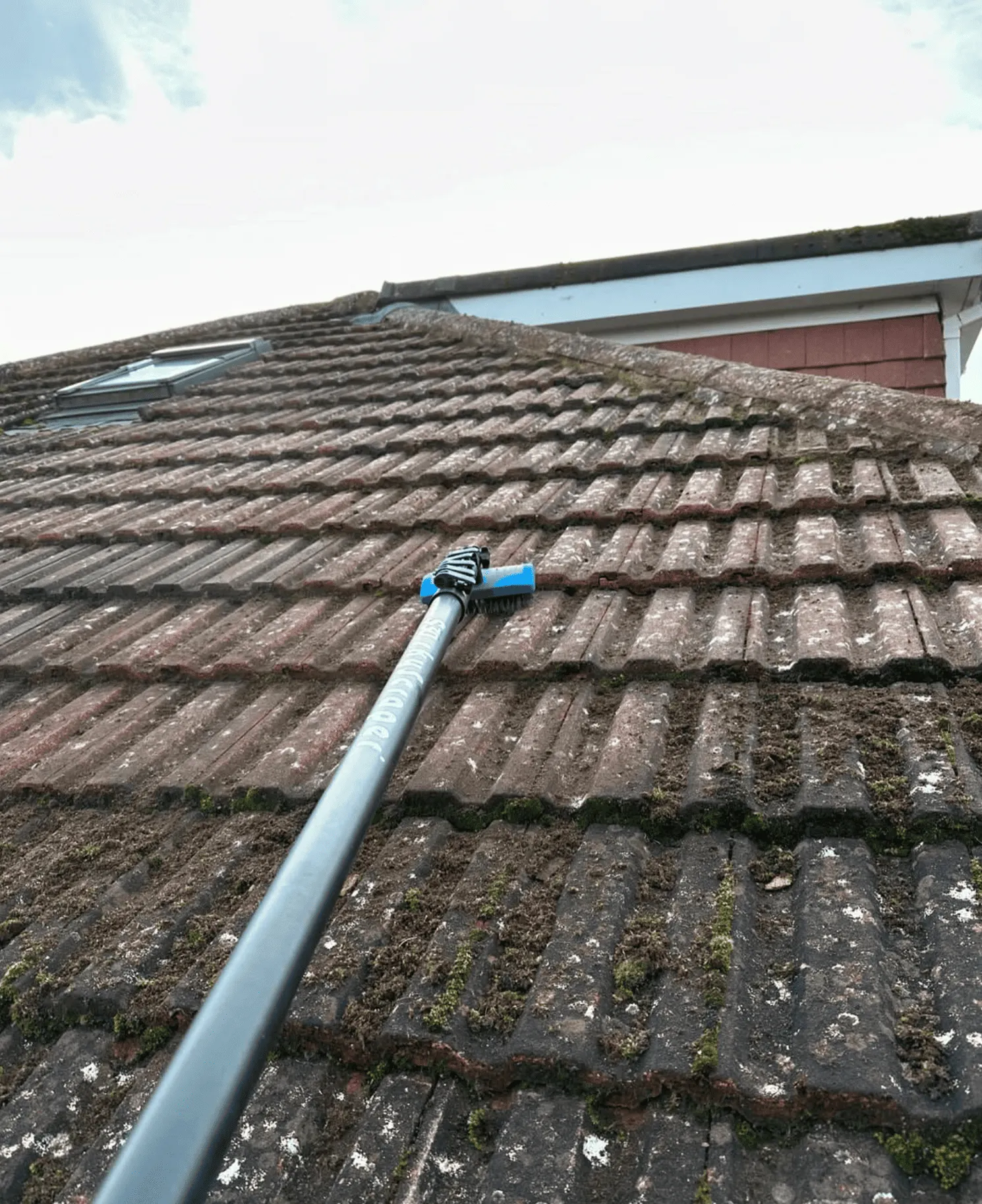Keeping the outside of your home clean is important for both the look and the structure of your home. Over time your rendered walls can get organic growth like algae and mould, along with stubborn stains from pollution, dirt and general wear. These unsightly marks can ruin your home’s curb appeal so regular cleaning is a must.
But cleaning render requires a gentle approach as the wrong method can cause permanent damage. Two methods are often considered: soft washing and pressure washing. Both have their pros and cons depending on the surface being cleaned, the level of dirt and the type of render on your building. This guide will help you decide what’s best for your property.
What is Render, and Why Does it Need Cleaning?
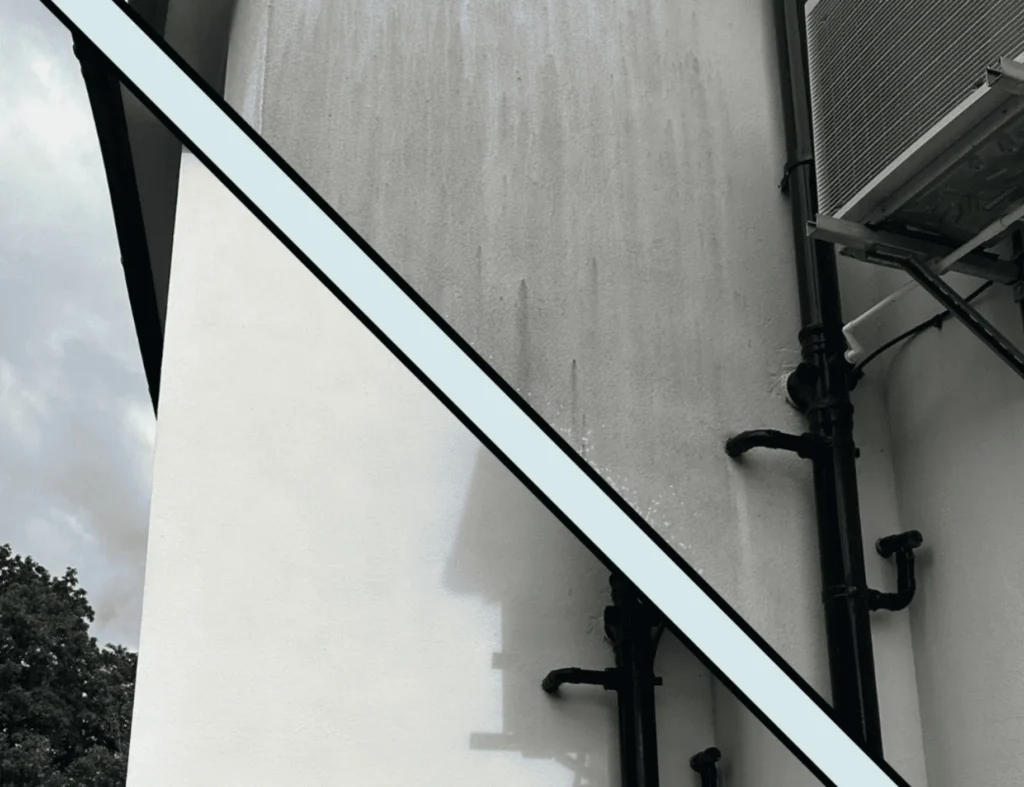
Render is a finish applied to the outside of walls to improve appearance and provide some level of weatherproofing. Depending on the type of render—acrylic, silicone or cement based—it can collect dirt and become a breeding ground for organic material like algae, mould and mildew. Over time this buildup can cause discoloration, unsightly stains and even physical damage to the render.
If left uncleaned these contaminants can lead to bigger problems like compromising the waterproofing of the render and allowing moisture to get into your home’s structure. So regular maintenance and effective render cleaning is essential to protect both the appearance and longevity of your rendered surface.
Soft Washing: The Safe and Gentle Approach
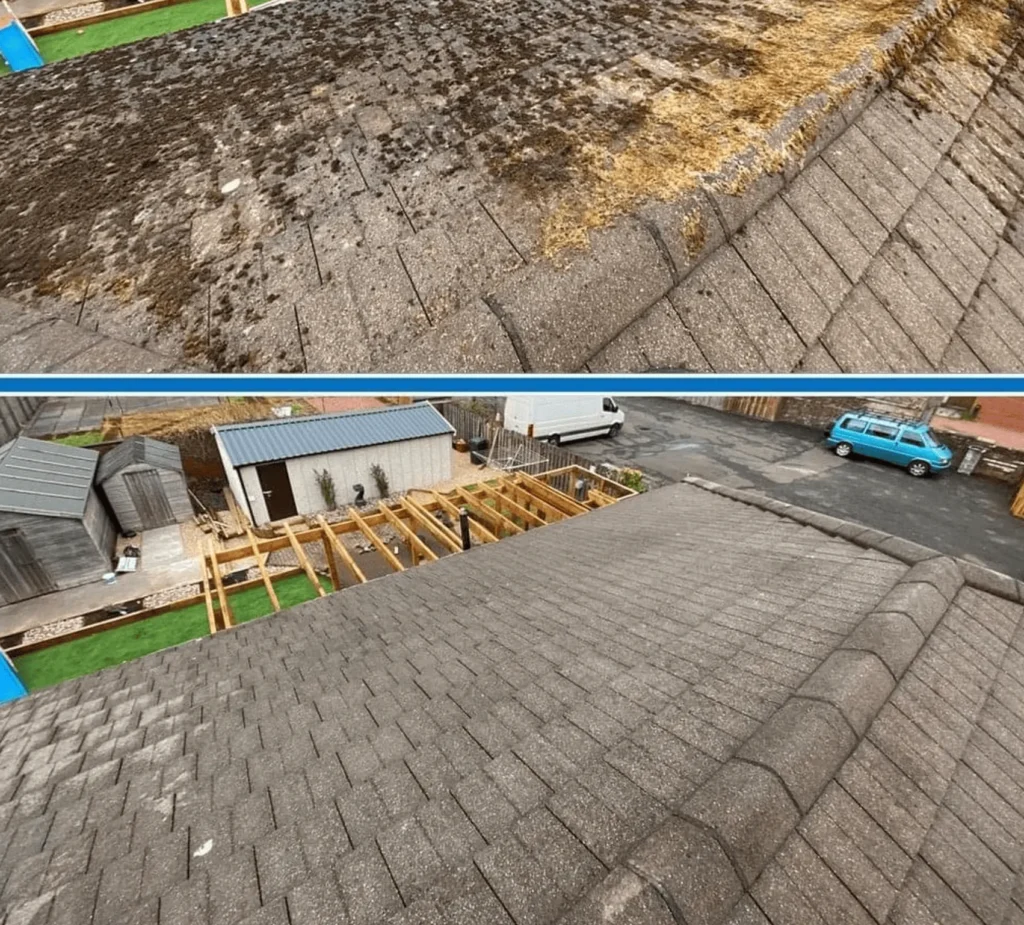
Soft washing is a low pressure cleaning method that uses special cleaning solutions to break down and remove organic growth, dirt and other contaminants from your render surfaces. The low pressure means no delicate surfaces are damaged during the cleaning process making it the preferred method for most render types especially those that can be damaged.
Benefits of Soft Washing:
- Protects Delicate Surfaces: Unlike pressure washing which uses high pressure water, soft washing uses a gentle approach that avoids the risk of damage to the render. It’s ideal for fragile or delicate materials and works well on organic stains without harming the surface.
- Removes Organic Growth: Soft washing is great at removing organic material like algae, moss and mould. These contaminants thrive on render surfaces due to moisture buildup and can cause biological growth that breaks down the render over time.
- Longer Lasting Results: Soft washing not only removes surface dirt but also treats the root cause of the contamination. By targeting organic matter deep within the render it ensures a more thorough and longer lasting clean than high pressure water cleaning methods.
- Environmentally Friendly: This method uses eco friendly cleaning chemicals and mild cleaning solutions, no harsh chemicals that can harm the environment. These gentle detergents are biodegradable and effective against many types of stains.
Best Surfaces for Soft Washing:
Soft washing is perfect for softer surfaces that can’t handle a pressure washer. These include:
- Delicate materials like render, stucco or wood
- Roof shingles
- Vinyl siding
- Wooden decks
Soft washing uses a low pressure water stream with a chemical treatment so it’s a gentle cleaning method that won’t damage delicate surfaces but will get deep into the grime.
Pressure Washing: The Heavy Duty Option for Tougher Surfaces
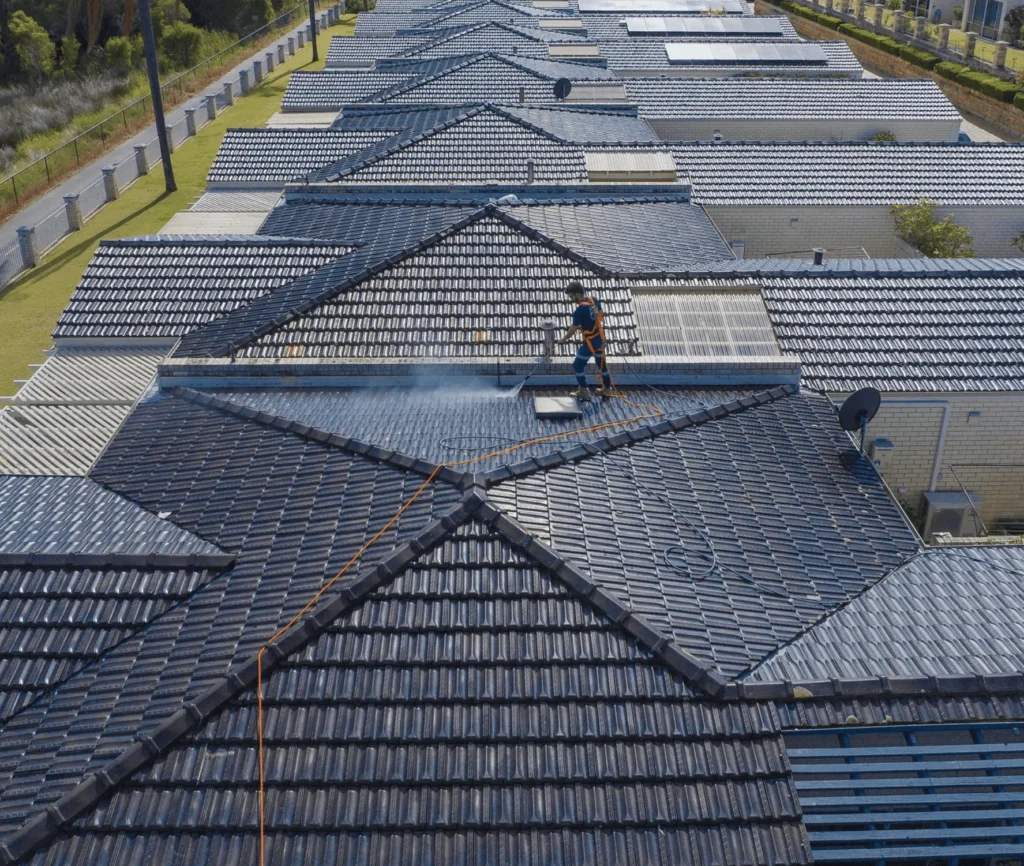
Pressure washing (also known as power washing) uses a high pressure water jet to blast away dirt, grime and stubborn stains from surfaces. This is best for harder surfaces like concrete, brick walls and paved areas that can take the pressure. For these tougher surfaces pressure washing is quick and effective.
But on more delicate surfaces like render pressure washing can cause unnecessary damage. The high pressure water can erode the surface, crack it and strip away the protective layers of the render.
Pressure Washing Benefits:
- Tough Stain Removal: Pressure washing is perfect for tough stains like grease, oil and embedded dirt. The water pressure cuts through layers of grime making it the go to solution for heavily soiled or hard surfaces.
- Fast Cleaning: Because it uses a high pressure water stream pressure washing is quick and powerful for large areas so it’s great for driveways, patios and walkways.
- No Chemicals Required: In some cases, pressure washing can clean surfaces with just water, so no chemicals are required. But for certain stains, detergents may still be needed.
Pressure Washing Drawbacks:
- Damage to Render: The high pressure of a pressure washer can be too much for rendered walls especially those made of delicate materials. Over time this can cause micro cracks and surface erosion which can lead to long term damage.
- Short Term Results: Pressure washing only addresses surface dirt and doesn’t penetrate deep enough to get rid of organic growth like algae and mold. So the contaminants will come back quickly and you’ll need to clean more often.
Making a Decision: Which One is Right for You?
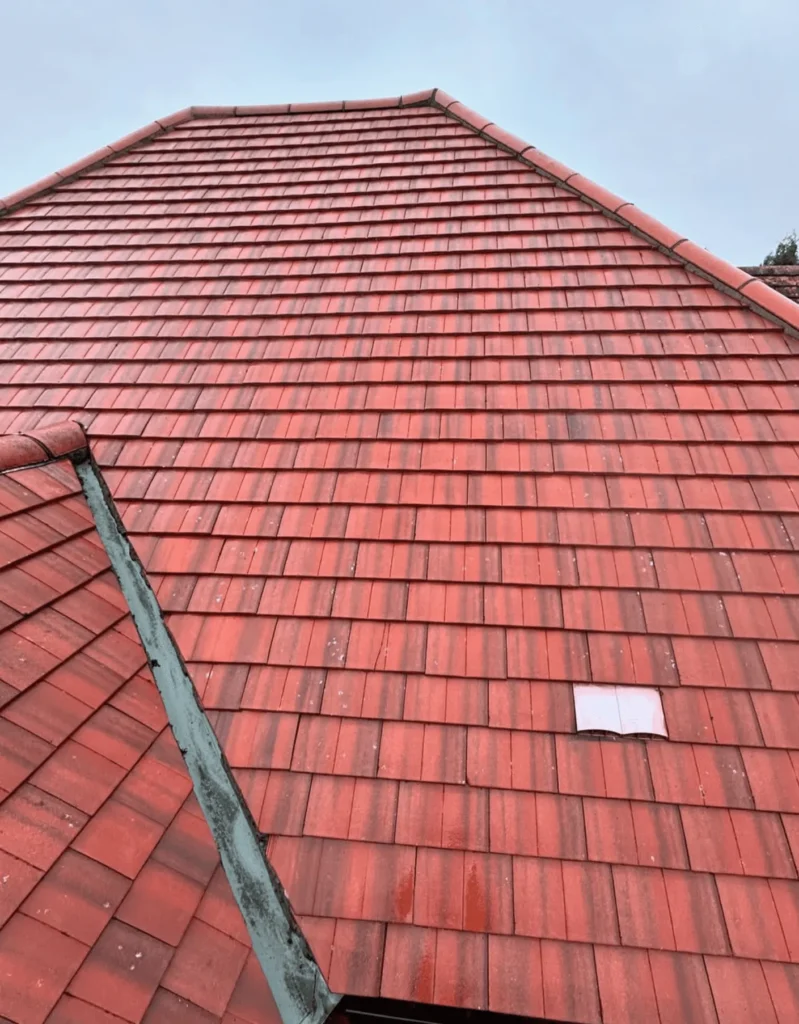
When choosing between soft washing and pressure washing, the key factors to consider are the surface type, level of contamination and the outcome you want. Each has its benefits, but you need to match the right cleaning method with the right surface to avoid the risks.
Soft Washing is Best If:
- You have delicate surfaces that can’t handle high-pressure water.
- Your exterior walls have significant organic growth like algae, mildew or mould.
- You want a long-term solution that addresses the root cause of dirt and biological growth, not just surface dirt.
Pressure Washing Is Best If:
- The surface you’re cleaning is hard and can take high pressure, like concrete, brick walls or driveways.
- You need to remove tough stains and dirt that’s built up over time.
- Time is of the essence, and you need a quick and dirty solution for large, hard surfaces.
Regular Maintenance Is Key
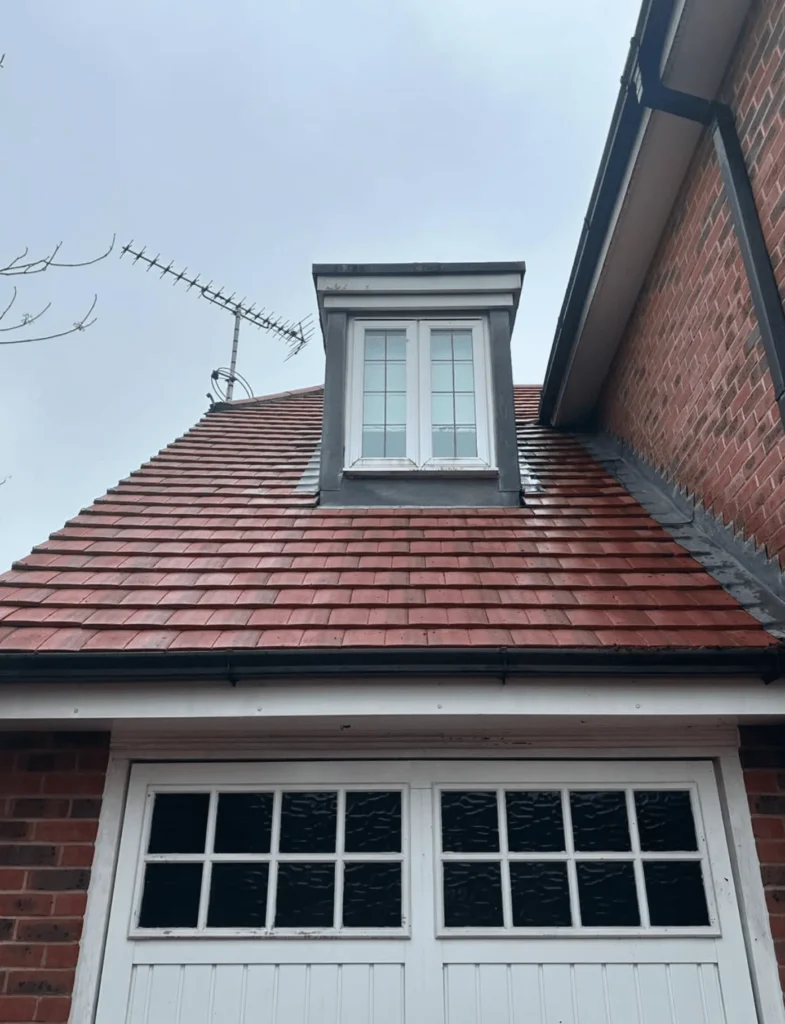
Whether you choose soft washing or pressure washing, regular maintenance is key. With regular cleaning you can prevent dirt, grime and organic growth from building up and detracting from your home’s appearance and causing long term damage if left untreated. Many homeowners find that a combination of both methods—soft washing for delicate surfaces and pressure washing for tough areas— is the best solution for overall exterior maintenance.
In short, both soft washing and pressure washing have their own benefits depending on the type of render and surface. For delicate surfaces soft washing is the safest and best option. For hard surfaces pressure washing is the best. By knowing the differences and choosing the right one you can keep your render surfaces clean, intact and organic growth free for years to come.
FAQ
Can a pressure washer be used on all types of render?
No, using a pressure washer on soft or delicate render will cause permanent damage. Soft washing is a better option for these surfaces as it uses low pressure water and special cleaning solutions that are gentler.
What are the advantages of soft washing over pressure washing?
Soft washing is best for delicate materials and provides a deeper, longer lasting clean by targeting organic material like algae and mold. Pressure washing is faster but better for tough or hard surfaces and can damage delicate surfaces like render.
How often should I clean my render?
It’s recommended to clean your render every 1-2 years depending on environmental factors like moisture and organic growth. Soft washing is recommended for render surfaces as it prevents damage and gives long lasting results.
Will pressure washing remove algae growth?
Pressure washing will remove surface dirt and algae but not the root cause of the growth. Soft washing uses a chemical treatment that kills the algae at the source so it’s a deeper clean.
Is soft washing more expensive than pressure washing?
Soft washing may seem more expensive at first as it uses special cleaning solutions but you may need fewer cleaning sessions in the long run so it’s more cost effective.
